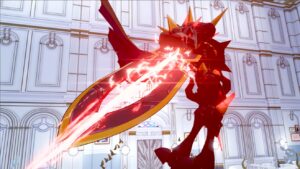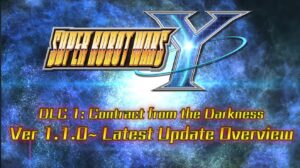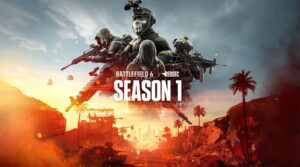Since the early 2000s, the Second World War, as a setting, has been beaten to death in gaming. I can’t remember all the games that have come out with that setting in mind, be it RTS or FPS. I am, however, fond of the few mech games that appear in that setting. Mech in an alternate-timeline setting is nothing particularly groundbreaking, and neither is Grit and Valor. At the end of the day, mech and tactical strategy mix well, and the game has a lot of both.
Grit and Valor is a real-time tactical roguelite set in an alternate timeline where the Axis forces are on the verge of wiping out the Allies using their mechanized army. The year is 1949. You are a commander of what’s left of the Allied resistance. A daring plan is hatched to stop a “Dr. Z” from realizing total world domination. It involves re-purposed Axis mechs, an EMP bomb, and a whole lot of courage.
Grit and Valor – 1949 consists of four campaigns, each having a series of maps wherein you have a primary objective and an optional task. The player takes control of up to three mechs and a command vehicle, moving them around a tiled area of operations in real time. In essence, you tell the mechs where to go and what abilities they can use within their range. That’s it. The mech pilots handle general combat. You don’t tell them who to shoot or when. They will automatically attack the first enemy that gets into their attack range. They will, however, prioritize stronger enemies over immediate enemies.
The objectives in every encounter are the same — clear all four waves of enemies in the most efficient way possible and keep your command vehicle operational till the end of the run. If the command vehicle loses all of its hit points, you will be forced to retreat to base to plan another run. A handful of optional objectives are also present in each mission. They serve as a means to break the monotony of doing the same thing by handsomely rewarding you with resources you can use during and after the run is complete.
Figuring out the map terrain and optimal positioning is this game’s bread and butter. The better you are at positioning, the more prepared you will be when the enemy inevitably attacks. Your preparedness is more than just for flexing, though. Since missions typically run upwards of 30 minutes, you need to be smart about resource and ability management. You don’t want to be at the boss’s welcome mat only to be on the verge of falling apart. Do you?
I want to mention that each region has its unique challenges that help keep things interesting. It can be as simple as having turrets activate in the middle of a wave to worrying about attacks from a Zeppelin flying overhead. When you eventually reach the game’s final stage, New Germany, you will be dealing with pressure plate doors and burning grated floors. I have to give props to the devs for keeping this “interesting” till the end.
No matter the outcome of each mission, you will always return to base, where you will spend the resources you collected in that run to buy new upgrades, pilot skills, and even brand-new mechs. There are a total of 9 mechs to unlock and 3 pilots to recruit to your cause on top of the 3 pilots you get early on. The mechs can be unlocked in any order you wish, but the cost of unlocking the next mech gradually increases, so choose carefully. One new pilot will join the squad after you achieve victory in their respective region for the first time.
The gameplay loop goes as follows. You complete campaigns by enduring encounter after encounter en route to the campaign’s boss fight. At the end of the run, you will be rewarded with new parts depending on the difficulty of the encounters you choose to partake in. You know, the typical left or right decision with no going back. Typically, you will be earning anywhere between 2-4 parts with a campaign victory earning you the most parts. You can redo the campaign as many times as you want, but the enemies will not scale with your current level of gear.
Gear rarity is a thing in this game. I don’t mind it so much, as you can combine 3 random parts to produce a new part. The resulting new part is a tier higher than the lowest part of the three. It’s a neat little system that helps address the issue of unwanted parts. You are free to throw in whatever part you wish, as the result is something completely unexpected. It’s kind of disappointing that it’s all random. I suppose min-maxing will only result in stupidly broken builds. But that’s already overthinking it. It doesn’t take much to be completely overpowered in this game, even with random parts with stats that aren’t always optimized.
The game’s card system is something I equally love and hate about the game. At the start of each wave, a supply drop will appear in a random area of the map. If you pick it up, you get to choose one card upgrade for one of your mechs. It’s all luck-based, so there’s always a chance of building up an overpowered squad. Or you can end up in a situation where little or no, synergy and you are forced to rely on crappy rolls and positioning to win the battle.
It’s not all about positioning in this game, however. It also primarily runs on a rock, paper, scissors format. In this case, it’s bullets, flames, and explosives. Bullets deal bonus damage to flame, flame owns explosives, and explosives wipe the floor with bullet types. The right unit in the right place often makes the difference, and choosing on the fly is something I greatly enjoyed during my time with the game.
I remember this one run where I managed to pick up a series of cards that allowed my mech to regain health after every kill. It wasn’t supposed to be by much, and there’s the added chance of the mech getting stunned for a second. But because this mech’s current cards were focused on recovery, it can fully recover after killing one enemy. It was stupidly broken. I took this mech to the boss battle, where I lost after getting my command vehicle stuck between a rock and a hard place. I may have lost that run, but my one mech didn’t get so much as a scratch. I was overjoyed and ready to dive in again.
I wish I could say that I had more miraculous runs like that one, but those truly OP runs don’t come by often. Most of my victories usually come as a result of min-maxing and investing in the right parts. It’s a “by-the-numbers” approach that has gotten me easy wins against most of the bosses of each region.
The boss battles are the best parts of the game. This is where the real-time tactics part truly shines. Regardless of which of the four bosses you face, you will be pressured to stay one step ahead of a boss’s attack and to be in positions ready to repel a steady stream of reinforcements. Those fights are the most intense and enjoyable I’ve seen in a tactics game. Even with the ability to slow down and stop time, I’m almost always reading the map like it was damn chessboard. I’ve had more than a few disappointing ends after having my command vehicle destroyed for the silliest of reasons. Like being sandwiched between a boss attack and a wave of enemies.
My biggest issue with the game is its audio. If you pause the game at a certain moment, you lose most of the audio for that encounter. It’s annoying to have it happen so often. Another annoying thing is how derpy the mechs can get while moving to their assigned location. They go around each other in awkward ways; worse is that it sometimes ends up with them taking unnecessary damage or even getting destroyed. It’s times like that I bite the bullet and soldier on the best I can.
The more I played the game, the more I noticed that all the effort for this title went into the gameplay loop and the boss battles. I can’t help but notice how unpolished the game’s assets are and how forgettable the story is. Heck, the prologue and epilogue were the only things to get the animation treatment. The rest of the story is told in boring dialogue scenes that are so unremarkable that I can’t be bothered to recall much of what was said. But hey, I can’t dock points for something that’s clearly window-dressing.
Grit and Valor – 1949 is a serviceable mech tactics game that has equally serviceable rogue-like elements. I wish that there could be more to the story and characters, but what’s already here is good for at least 16 to 20 hours of play. If you like tactics games, you will definitely like this neat little experience. The mechs are a definite bonus but don’t go expecting anything too deep. Or anything that resembles a story or even characters.
This review is based on a PC review code provided by the developer/publisher
Grit and Valor - 1949 (PC)
Grit and Valor is a serviceable mech tactics game that has equally serviceable rouge-lite elements.
The Good
- Real time positioning can get intense
- High chance of getting the build you want
- Surprise OP builds from out of nowhere
- Fun boss battles
The Bad
- Audio cuts off on occasion
- Mechs tend to derp while moving to target tile
- Forgettable story
- Rough around the edges







